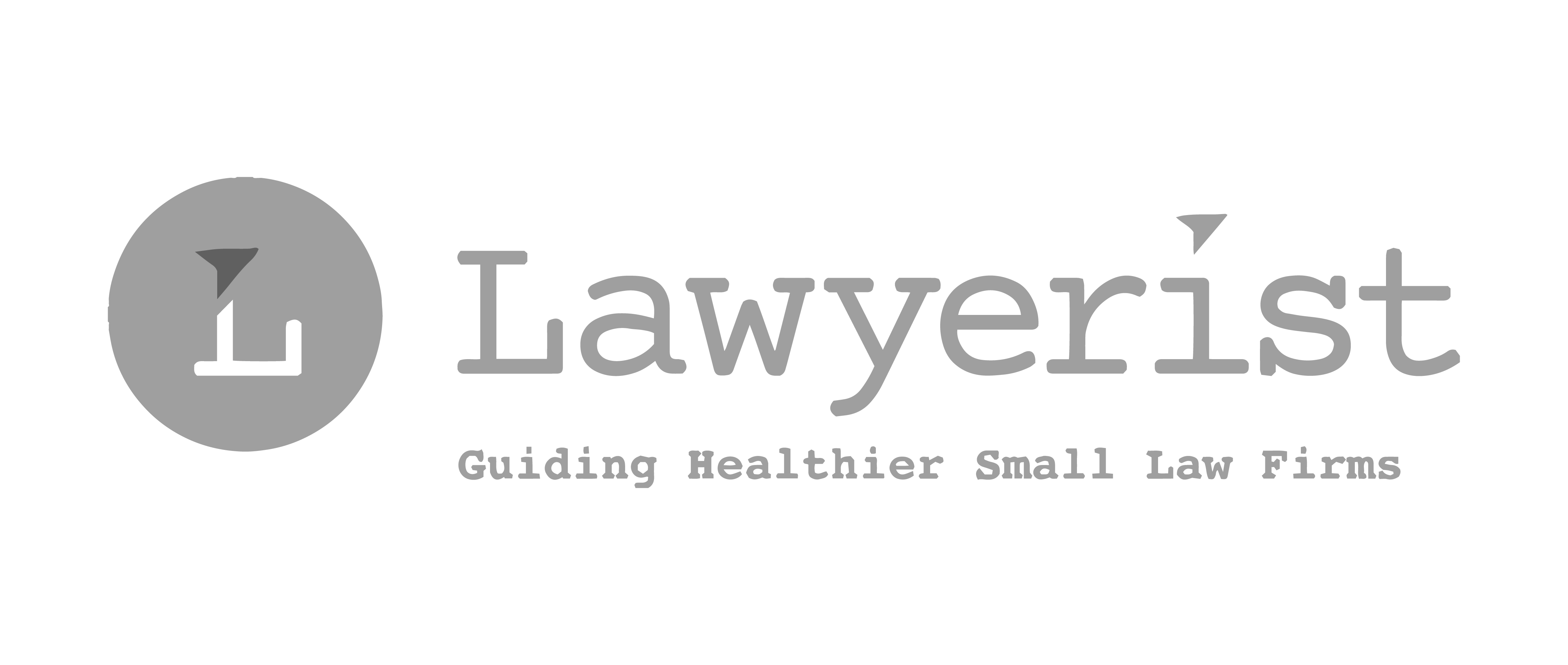Four Shortcuts to Managing Your Law Firm Projects

No one ever heard Perry Mason say “Wow, this billing system is top-notch.” Law & Order’s Jack McCoy never waxed rhapsodic about the thrill of a well-organized court calendar. And the cast of Suits was far too busy conniving and canoodling to sing the praises of their e-signature platform.
Setting up effective time capture and billing processes, utilizing your team’s experience while still providing professional development, meeting court deadlines, and running business intelligence reports aren’t the most thrilling parts of being a lawyer. Lawyers go to law school to learn how to practice law. Unfortunately, as with most traditional professions like law, medicine, and dentistry, rigorous professional programs usually don’t teach the business management skills necessary to run a successful practice.
Being a great lawyer doesn’t automatically make you a great project manager. But with a little help from technology, you can be both. Great lawyers and great project managers have quite a bit in common. They both rely on attention to detail, an ability to learn and analyze the minutiae without losing sight of broad trends, an aptitude for multitasking, and a talent for delegating. The difference is that lawyers need to use those skills to manage their cases, not their practice.
And that’s where legal project management software saves the day.
Why you need a legal project management platform
Implementing legal project management software at your firm is like hiring a highly efficient business manager for a fraction of the cost. It will help you:
- Organize and consolidate calendars across your firm
- Improve the accessibility and security of your document management program
- Facilitate collaboration between team members
- Increase the accuracy of your time tracking
- Automate billing and collection operations
- Standardize client onboarding processes
- Boost the frequency and quality of client communication
- Allocate work across practice areas, development needs, and expertise
Not all practice management software is created equal, though, and even the best program won’t work if they’re not set up well.
To maximize your practice management investment, it’s critical to fully understand how all your processes currently work and how you want them to work. When they dig into it, most firms find their processes are full of wonky workarounds that naturally start to crop up when an organization outgrows the processes it started with.
Once you know what you need your program to do, it’s much easier to create the customizations and dashboards you need to make it happen.
Legal project management using practice management software
One of the biggest advantages a legal practice management software can give your firm is the ability to streamline your project management functions.
According to the Project Management Institute, project management is the “use of specific knowledge, skills, tools, and techniques to deliver something of value to people.” By definition, it sounds pretty simple. In reality, it can be anything but. Many universities offer bachelor’s and master’s degrees (as well as multiple certifications) in project management for multiple industries.
Project managers act as a central hub, effectively managing task assignments, training, production cadences, budgets, milestone deliveries, and communication so that team members stay on the same page. In a law firm, it’s not uncommon for the terms “project management” and “case management” to be used interchangeably. But they aren’t quite the same thing.
While case management is specific to legal matters, project management can encompass managing a firm’s (or partner’s or associate’s) full workload. It includes marketing and business development initiatives, resource deployment, scheduling for non-billable employees, managing client expectations, and overseeing accounting functions.
Applying consistent, standardized project management principles and automation tools to each case can help your team:
- Automate processes to reduce human error
- Reduce workloads (and stress!) by eliminating redundant processes
- Spend more time on profitable projects
- Establish clear expectations and accountability measures for each employee
- Strengthen client relationships
- Avoid scope creep
Here are four tips for improving project management at your firm:
- Define your projects
- Plan and strategize
- Do the work (with a feedback loop)
- Close the project
1. Operate with clear project definitions
This is undeniably the most important step in effective project management. It’s also the step most people only do partially right.
When we say define the project, we mean the whole project. You need to understand:
- Who the stakeholders are, both at your client’s organization and within your firm
- How you will work together and make decisions
- What stakeholder expectations are for fees, communication cadence, point of contact, etc.
- What the primary desired outcome is
We know it’s impossible to set exact timelines and budgets when projects start. The more clarity you have upfront, though, the better your results will align with expectations.
Here’s an example. Say you’re working on reviewing hiring procedures with your HR team. If you’re only wanting to evaluate the recruitment and interviewing processes for junior associates but your HR team expects to look at hiring processes across the board, you’ll quickly run into obstacles. But if you take the time to map out the scope beforehand, you can move forward more efficiently.
2. Plan and strategize
This step is where legal project management software shines. By providing a high-level view of each employee’s workload, calendared commitments, skill set, and development needs, case managers can divide tasks in a way that is equitable and also maximizes the contribution of each individual.
You can set preliminary milestone delivery targets, delegate responsibilities, create document management folders, automate billing rates, etc., in a centralized location and then publish it to everyone involved at once. Notifications, alerts, and reminders can be scheduled. Progress reviews can be arranged.
Remember—this initial plan isn’t set in stone. Every case requires some level of adaptability. But you wouldn’t start a cross-country road trip without mapping a route (at least we hope you wouldn’t), and you shouldn’t start a complex, months-long project without a basic framework.
3. Do the work (with a feedback loop)
This stage makes up the bulk of every project.
If you’ve gone through the project planning steps first, processes will be less stressful and more efficient than they would otherwise be.
The trick to remaining on track is to keep the communication flowing. If deadlines are missed, there needs to be immediate follow-up to avoid a cascade of late deliverables. If an employee or team is struggling to manage their workload, it’s time to redistribute responsibilities or resources (or both). When the inevitable wrenches get thrown in the gears, a clear chain of command for escalations or decision-making authority can eliminate hand wringing or wheel-spinning.
Here are a few tips for clear communication:
- Agree upon methods and frequency of communication with any stakeholders—for example, email check-ins once a week
- Keep all project management tools up to date—team members should be responsible for checking off tasks and keeping information up to date
- For meetings:
- Set a clear agenda beforehand
- Follow meetings with recap emails to ensure everyone has the same information
This pattern of communication should extend to your client as well. Make sure they know who and how to contact someone if they have questions or concerns.
4. Close the project
This final step is often skipped in favor of moving on to more profitable work, but that results in missed opportunities for improvement.
Even if all you do is conduct a client exit survey and run a few productivity or profitability reports, a project post-mortem can yield valuable business insights that can help improve the quality of your service and the satisfaction of your employees and clients.
Use the best, be the best
Rocket Matter’s proprietary practice management software simplifies legal project management without sacrificing your ability to keep your finger on the pulse of your firm. Easy to learn and easy to use, our platform makes sure your project management skills are as powerful as your legal skills.
Once you achieve that, you can, to quote Perry Mason, “Toast the things for which there are no substitutes: good friends, happy days, and victory.”
If you’d like to see what Rocket Matter could do for you, schedule a demo today.
Share post:








